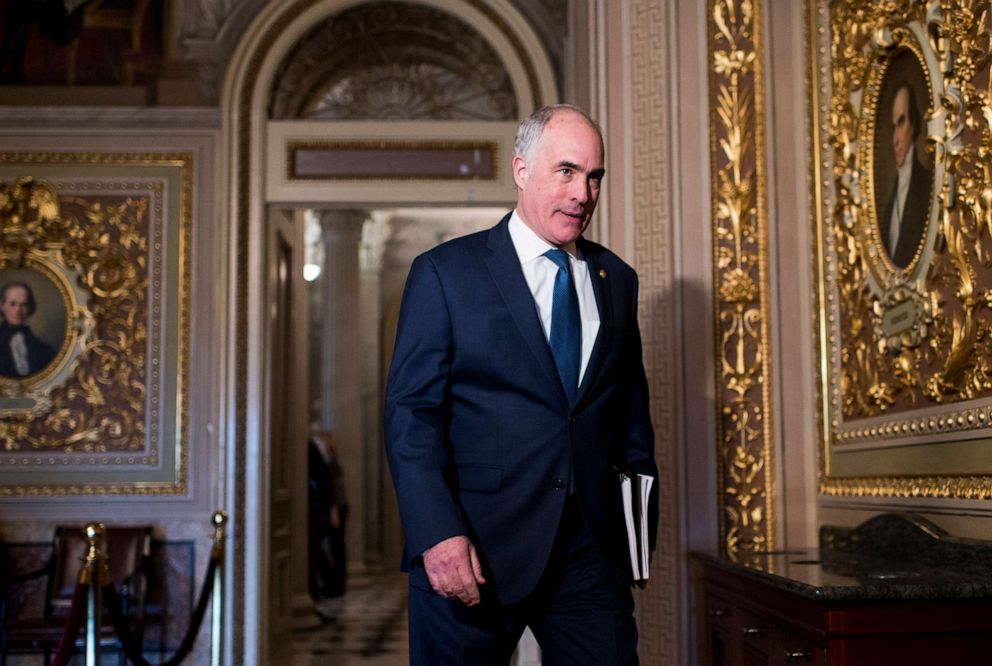In first federal count, over 25,000 coronavirus deaths in nursing homes
Regulators are planning to increase penalties for failure to manage infections.
The federal government has begun sharing its tracking data for nursing home fatalities for the first time since the novel coronavirus outbreak, a step long urged by members of Congress as an important way to guide efforts to protect the elderly and frail as the nation tries to reopen.
“Without this information, adequate testing and a full supply of [personal protective equipment], our seniors will continue to suffer,” U.S. Sen. Bob Casey, a Pennsylvania Democrat, said last month.
The new, initial numbers from the Centers for Disease Control and Prevention and Centers for Medicare and Medicaid Services were shared in a letter to U.S. governors dated Sunday and obtained by ABC News. The numbers document that at least 25,923 nursing home residents have died as a result of COVID-19, though the figure doesn't include reporting from some states prior to May and differs from state-by-state reports due to disparities in the way data is tracked.
The federal regulators also acknowledge their first release of figures may account for about 80% of the nation’s nursing homes, and that “data maybe inconsistent with state data, particularly state death data.”
Centers for Medicare and Medicaid Administrator Seema Verma said Monday afternoon that she expects the dataset to represent more nursing homes each week during a press call with reporters.
The survey is the first to include the number of nursing home staff killed in the outbreak, which federal officials list at 449 fatalities across the country. And it marks the first public accounting of deaths in 10 states that were not previously publishing any data about the outbreak’s severe impact on those in long-term care facilities during ABC News' most recent survey.
Along with the new figures, the federal agency that regulates nursing homes told governors they intend to step up penalties and enforcement of infection control efforts. Problems containing infections using trusted methods, like frequent hand-washing and changing gloves and masks, have surfaced frequently during inspections of facilities where there have been deadly coronavirus outbreaks. In inspections, multiple facilities have been shown not to be using certain infection control methods properly.
"Many of the surveys we have done we have found that hand washing continues to be a challenge, and many facilities are not prepared to adequately isolate and cohort patients that have COVID or are suspected of having it," Verma said.

The federal totals remain lower than the numbers gathered through a state-by-state analysis conducted by ABC News in mid-May. That survey found more than 37,600 deaths attributed to the coronavirus in nursing homes and long-term care facilities from 40 states and the District of Columbia stretching back to the beginning of the crisis.
Just over 100,000 total coronavirus deaths in the U.S. have been reported since the outbreak reached America's shores, according to a tally by Johns Hopkins University.
The new federal count shows that in the 10 states that were not reported nursing home fatalities during ABC News' last survey of national data, an additional 794 residents and staff have died. Those states are Alaska, Arizona, Delaware, Hawaii, Idaho, Kansas, Maine, Montana, Missouri and Utah.
Federal officials said one reason for the disparity in the counts is because some states only provided figures to the federal government starting in May, when they were first required to provide data specific to nursing homes. That means earlier staggering nursing home outbreaks like the ones that killed dozens in Seattle, Virginia, Massachusetts and New York may not be counted in the federal data.
Verma said Monday however, that she believes many nursing homes did report retrospectively despite the fact that they were not required too.
"My thought is that most of the nursing homes did report because I don't think the numbers would have been that high if they didn't," Verma told reporters. "I mean there's no way that we had 26,000 new cases in the week in nursing homes, but that being said, the requirement was only to report as of that week."
Also, when responding to ABC News inquiries, some states included deaths in assisted living centers, over which the federal government does not have authority, so they are not tracked by federal regulators and not included in their tally, officials said.
The omission of deaths from assisted living facilities in federal counting had already drawn criticism from Senate Democrats and advocates.
“The reality is this virus doesn’t care whether seniors are living in assisted living facilities or living in nursing homes it can affect them regardless,” Sen. Elizabeth Warren, D-Mass., said during a Senate hearing earlier this month.
University of Chicago Professor R. Tamara Konetzka, who studies nursing homes and assisted living facilities, said that the differences between nursing and assisted living facilities varies by state. Assisted living often allows for slightly more separation between residents, but still involved staff care that has shown to be a cause of outbreaks.
“They’re just older populations who probably are very vulnerable to the virus,” Konetzka said.
The release of this data has been long awaited by Senate Democrats who have for weeks called on the federal government to make more info about the affects of COVID-19 in nursing homes available.

Earlier this month, Casey said incomplete data was part of the reason Congress was struggling to provide appropriate aid to nursing homes.
"Still to this day, we are trying to help those residents and workers in nursing homes with one hand tied behind our backs because the Administration... is not releasing any data on outbreaks in these facilities," Casey said during a hearing last month. "This is unconscionable."
While this data set represents the first installment of national data, it is expected that more nursing homes will comply with their reporting requirement next week, when they would otherwise begin to face a daily fine for failure to do so.
[Editor's Note: This report has been updated to accurately reflect the percentage of nursing homes from which the federal data was drawn.




